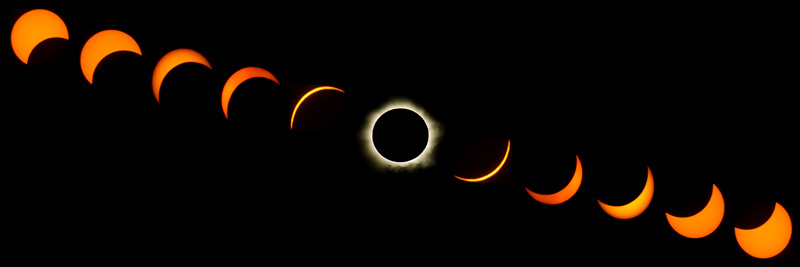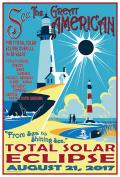Get Ready for the Great American Eclipse!
Fall
2016
Connecting Worlds
Get Ready for the Great American Eclipse!
For the first time in 38 years, a total eclipse of the Sun is coming to the continental United States.
By:Richard Tresch Fienberg, Press Officer, American Astronomical Society, Sigma Pi Sigma Rice University Chapter, Class of 1978

Monday, August 21, 2017. Mark your calendar. For the first time in 38 years, a total eclipse of the Sun is coming to the continental United States.
Unless you’re a member of the small but growing cadre of “eclipse chasers,” you’ve probably never seen a total solar eclipse before, as they tend to occur in far-flung places requiring costly travel. Not this time. On August 21, the Moon’s 70-mile-wide shadow will cross the country from Oregon to South Carolina, turning day to night for an estimated 12 million people who live within the narrow path of totality. You should make every effort to get into the path too.
Here’s why: During a total solar eclipse, the Moon blocks the Sun’s bright face—the photosphere—briefly revealing our star’s outer atmosphere: the shimmering corona, or “crown.” Made of rarefied gas heated to millions of degrees and sculpted into streamers and loops by the Sun’s powerful magnetic field, the diaphanous corona shines with a light seen nowhere else. It is hauntingly beautiful and, without doubt, one of the most awesome sights in all of nature.
The corona is always there, but we usually can’t see it because the photosphere is about a million times brighter. When the Moon covers the Sun, the corona is the main attraction. And that’s not all. At the beginning and end of totality, the thin middle layer of the Sun’s atmosphere—the chromosphere—blazes in an arc of ruby red. The sky darkens to a deep twilight blue, with yellow, orange, and pink sunrise/sunset colors on the horizon in all directions. Bright stars and planets shine forth, and the air temperature drops noticeably. Birds and farm animals, thinking dusk has settled, return to their nests and barns, and bats come out to feed.
Outside the path of totality, all of North America will get a partial solar eclipse. But even a 99 percent partial eclipse pales in comparison to a total one. It’s like buying a ticket at the box office, standing outside the theater, and saying you’ve seen the show.
Depending on your location, the corona will be visible for up to 2 minutes, 42 seconds. During those precious moments, it is perfectly safe to look directly at the Sun, even through binoculars or a telescope. But whenever any part of the photosphere is uncovered, it is absolutely essential to view the Sun through a safe solar filter—that is, one that meets the ISO 12312-2 international standard. Such filters are widely available at affordable prices. Looking at the uneclipsed or partially eclipsed Sun through dark sunglasses or any other unapproved filter is a recipe for serious and potentially permanent eye injury.
Want to know more? With funding from the National Science Foundation, the American Astronomical Society will create a special eclipse website on http://aas.org with basic information and links to more detailed resources. Visit today!

